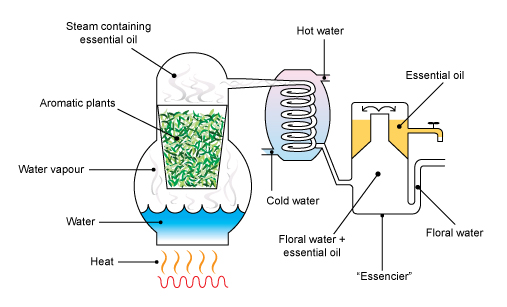Essential Oils
Information > Essential Oils
Essential Oils “Medicines out of the earth”
Essential oils, considered by some “the life force of a plant”, are made from leaves, stems, flowers, bark, seeds, berries, roots, rinds and resins of aromatic plants. The primary method of extraction is steam distillation, while some plant materials are cold-pressed or solvent extracted.Because of their unique, minute molecular structure and fat solubility, they are able to enter our bodies in two ways: inhalation and directly through the skin (transdermal penetration).

Essential oils contain the plant’s precious, aromatic hormones and chemical compounds with many antiseptic, antibiotic, analgesic, anti-inflammatory and antiviral properties. They are important to include in body care products because they are able to penetrate our skin to nourish, rejuvenate and revitalize skin cells.
Essential Oil Tips & Guidelines
1. Keep out of children’s reach.
2. Store in a dark, dry, cool place. Most oils will retain their healing properties for 5 -10 years except for citrus oils which remain potent for only 6 – 12 months.
3. Always dilute in a base/carrier oil before using on skin with the exception of Lavender & Tea Tree essential oils. The dilution rate for most body care applications is 15 - 30 drops per 1 ounce of carrier oil; decrese that by half for children under 8 years old (7 - 15 drops per 1 ounce.) Some examples of carrier oils are: Jojoba, Coconut, Almond, Olive, Avocado & Grapeseed.
4. If an essential oil should accidentally get in your eyes, immediately flush the eye with a vegetable oil such as almond, olive, peanut or generic vegetable oil.
5. You can determine potential allergic reactions by combining 1 or 2 drops of the essential oil with 1 tsp base oil in a small bowl. Apply a dab on the underside of your wrist or inside your elbow and wait 12 – 24 hours. If no irritation develops, the oil is safe to use.
6. Do not ingest unless under professional supervision.

